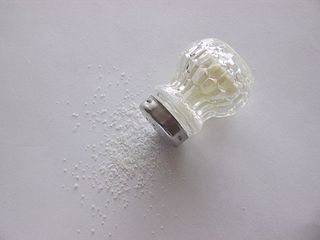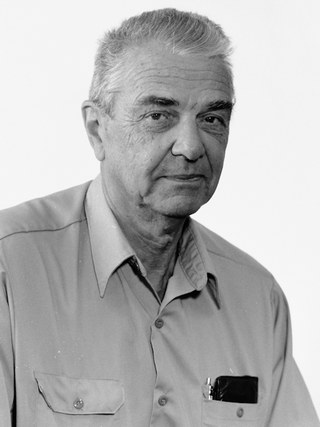Related Research Articles
Psychophysiology is the branch of psychology that is concerned with the physiological bases of psychological processes. While psychophysiology was a general broad field of research in the 1960s and 1970s, it has now become quite specialized, based on methods, topic of studies and scientific traditions. Methods vary as combinations of electrophysiological methods, neuroimaging, and neurochemistry. Topics have branched into subspecializations such as social, sport, cognitive, cardiovascular, clinical and other branches of psychophysiology.

Blood pressure (BP) is the pressure of circulating blood against the walls of blood vessels. Most of this pressure results from the heart pumping blood through the circulatory system. When used without qualification, the term "blood pressure" refers to the pressure in the large arteries. Blood pressure is usually expressed in terms of the systolic pressure over diastolic pressure in the cardiac cycle. It is measured in millimeters of mercury (mmHg) above the surrounding atmospheric pressure.
Baroreceptors are sensors located in the carotid sinus and in the aortic arch. They sense the blood pressure and relay the information to the brain, so that a proper blood pressure can be maintained.
Diuresis is the excretion of urine, especially when excessive (polyuria). The term collectively denotes the physiologic processes underpinning increased urine production by the kidneys during maintenance of fluid balance.

The diving reflex, also known as the diving response and mammalian diving reflex, is a set of physiological responses to immersion that overrides the basic homeostatic reflexes, and is found in all air-breathing vertebrates studied to date. It optimizes respiration by preferentially distributing oxygen stores to the heart and brain, enabling submersion for an extended time.

Vasodilation is the widening of blood vessels. It results from relaxation of smooth muscle cells within the vessel walls, in particular in the large veins, large arteries, and smaller arterioles. The process is the opposite of vasoconstriction, which is the narrowing of blood vessels.

A cardiac stress test is a cardiological test that measures the heart's ability to respond to external stress in a controlled clinical environment. The stress response is induced by exercise or by intravenous pharmacological stimulation.
Compliance is the ability of a hollow organ (vessel) to distend and increase volume with increasing transmural pressure or the tendency of a hollow organ to resist recoil toward its original dimensions on application of a distending or compressing force. It is the reciprocal of "elastance", hence elastance is a measure of the tendency of a hollow organ to recoil toward its original dimensions upon removal of a distending or compressing force.
Pain tolerance is the maximum level of pain that a person is able to tolerate. Pain tolerance is distinct from pain threshold. The perception of pain that goes in to pain tolerance has two major components. First is the biological component—the headache or skin prickling that activates pain receptors. Second is the brain’s perception of pain—how much focus is spent paying attention to or ignoring the pain. The brain’s perception of pain is a response to signals from pain receptors that sensed the pain in the first place.

Bed rest, also referred to as the rest-cure, is a medical treatment in which a person lies in bed for most of the time to try to cure an illness. Bed rest refers to voluntarily lying in bed as a treatment and not being confined to bed because of a health impairment which physically prevents leaving bed. The practice is still used although a 1999 systematic review found no benefits for any of the 17 conditions studied and no proven benefit for any conditions at all, beyond that imposed by symptoms.
Cold shock response is a series of neurogenic cardio-respiratory responses caused by sudden immersion in cold water.

Pathophysiology is a medicine which explains the function of the body as it relates to diseases and conditions. The pathophysiology of hypertension is an area which attempts to explain mechanistically the causes of hypertension, which is a chronic disease characterized by elevation of blood pressure. Hypertension can be classified by cause as either essential or secondary. About 90–95% of hypertension is essential hypertension. Some authorities define essential hypertension as that which has no known explanation, while others define its cause as being due to overconsumption of sodium and underconsumption of potassium. Secondary hypertension indicates that the hypertension is a result of a specific underlying condition with a well-known mechanism, such as chronic kidney disease, narrowing of the aorta or kidney arteries, or endocrine disorders such as excess aldosterone, cortisol, or catecholamines. Persistent hypertension is a major risk factor for hypertensive heart disease, coronary artery disease, stroke, aortic aneurysm, peripheral artery disease, and chronic kidney disease.
Swimming induced pulmonary edema (SIPE), also known as immersion pulmonary edema, is a life threatening condition that occurs when fluids from the blood leak abnormally from the small vessels of the lung into the airspaces (alveoli).

The tail flick test is a test of the pain response in animals, similar to the hot plate test. It is used in basic pain research and to measure the effectiveness of analgesics, by observing the reaction to heat. It was first described by D'Amour and Smith in 1941.

Salt consumption has been extensively studied for its role in human physiology and impact on human health. Chronic, high intake of dietary salt consumption is associated with hypertension and cardiovascular disease, in addition to other adverse health outcomes. Major health and scientific organizations, such as the World Health Organization, US Centers for Disease Control and Prevention, and American Heart Association, have established high salt consumption as a major risk factor for cardiovascular diseases and stroke.

Social stress is stress that stems from one's relationships with others and from the social environment in general. Based on the appraisal theory of emotion, stress arises when a person evaluates a situation as personally relevant and perceives that they do not have the resources to cope or handle the specific situation. The activation of social stress does not necessarily have to occur linked to a specific event, the mere idea that the event may occur could trigger it. This means that any element that takes a subject out of their personal and intimate environment could become a stressful experience. Situation that makes them socially incompetent individuals.
Heart rhythm disturbances have been seen among astronauts. Most of these have been related to cardiovascular disease, but it is not clear whether this was due to pre-existing conditions or effects of space flight. It is hoped that advanced screening for coronary disease has greatly mitigated this risk. Other heart rhythm problems, such as atrial fibrillation, can develop over time, necessitating periodic screening of crewmembers’ heart rhythms. Beyond these terrestrial heart risks, some concern exists that prolonged exposure to microgravity may lead to heart rhythm disturbances. Although this has not been observed to date, further surveillance is warranted.
Human physiology of underwater diving is the physiological influences of the underwater environment on the human diver, and adaptations to operating underwater, both during breath-hold dives and while breathing at ambient pressure from a suitable breathing gas supply. It, therefore, includes the range of physiological effects generally limited to human ambient pressure divers either freediving or using underwater breathing apparatus. Several factors influence the diver, including immersion, exposure to the water, the limitations of breath-hold endurance, variations in ambient pressure, the effects of breathing gases at raised ambient pressure, effects caused by the use of breathing apparatus, and sensory impairment. All of these may affect diver performance and safety.

Björn Folkow was a Swedish physiologist. He was professor in physiology at the University of Gothenburg between 1961 and 1987 and a member of the Royal Swedish Academy of Sciences.
The science of underwater diving includes those concepts which are useful for understanding the underwater environment in which diving takes place, and its influence on the diver. It includes aspects of physics, physiology and oceanography. The practice of scientific work while diving is known as Scientific diving. These topics are covered to a greater or lesser extent in diver training programs, on the principle that understanding the concepts may allow the diver to avoid problems and deal with them more effectively when they cannot be avoided.
References
- ↑ Wood DL, Sheps SG, Elveback LR, Schirger A (1984-05-01). "Cold pressor test as a predictor of hypertension". Hypertension. 6 (3): 301–306. doi: 10.1161/01.HYP.6.3.301 . PMID 6735451.
- ↑ Harlan WR, Osborne RK, Graybiel A (May 1964). "Prognostic value of the cold pressor test and the basal blood pressure: Based on an eighteen-year follow-up study". The American Journal of Cardiology. 13 (5): 683–687. doi:10.1016/0002-9149(64)90205-X. PMID 14152011.
- ↑ Hines Jr EA, Brown GE (January 1936). "The cold pressor test for measuring the reactibility of the blood pressure: Data concerning 571 normal and hypertensive subjects". American Heart Journal. 11 (1): 1–9. doi:10.1016/S0002-8703(36)90370-8. ISSN 0002-8703.
- ↑ Keller-Ross ML, Cunningham HA, Carter JR (September 2020). "Impact of age and sex on neural cardiovascular responsiveness to cold pressor test in humans". American Journal of Physiology. Regulatory, Integrative and Comparative Physiology. 319 (3): R288–R295. doi:10.1152/ajpregu.00045.2020. PMC 7509253 . PMID 32697654.
- ↑ Lowery D, Fillingim RB, Wright RA (March–April 2003). "Sex differences and incentive effects on perceptual and cardiovascular responses to cold pressor pain". Psychosomatic Medicine. 65 (2): 284–291. doi:10.1097/01.PSY.0000033127.11561.78. PMID 12651996. S2CID 21147595.
- ↑ Staff (9 Apr 2003). "Higher pain tolerance in males can't be bought". Eurekalert. Retrieved 2008-12-02.
- ↑ Brown JL, Sheffield D, Leary MR, Robinson ME (March–April 2003). "Social support and experimental pain". Psychosomatic Medicine. 65 (2): 276–283. doi:10.1097/01.psy.0000030388.62434.46. PMID 12651995. S2CID 21421297.
- ↑ Streff A, Kuehl LK, Michaux G, Anton F (March 2010). "Differential physiological effects during tonic painful hand immersion tests using hot and ice water". European Journal of Pain. 14 (3): 266–272. doi:10.1016/j.ejpain.2009.05.011. PMID 19540783. S2CID 16132640.